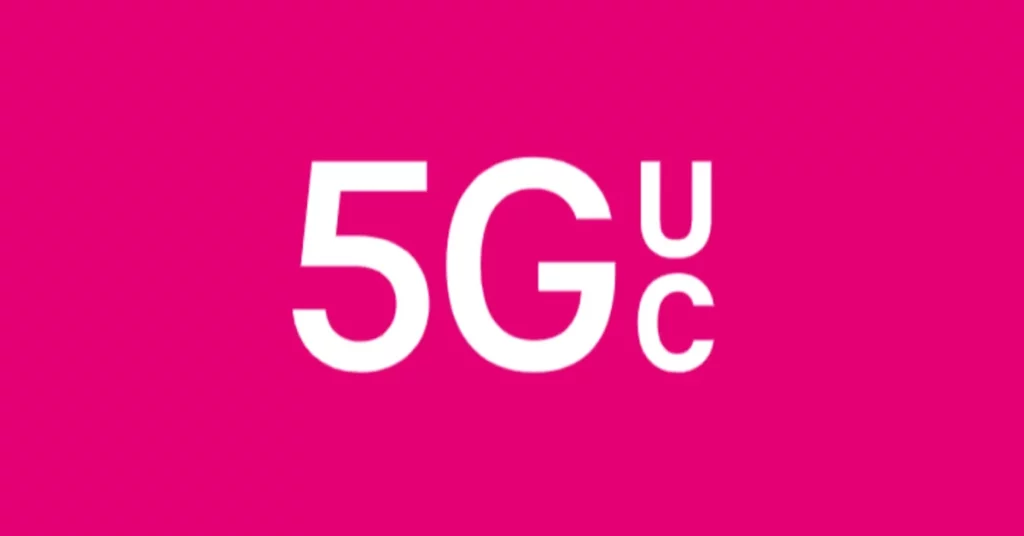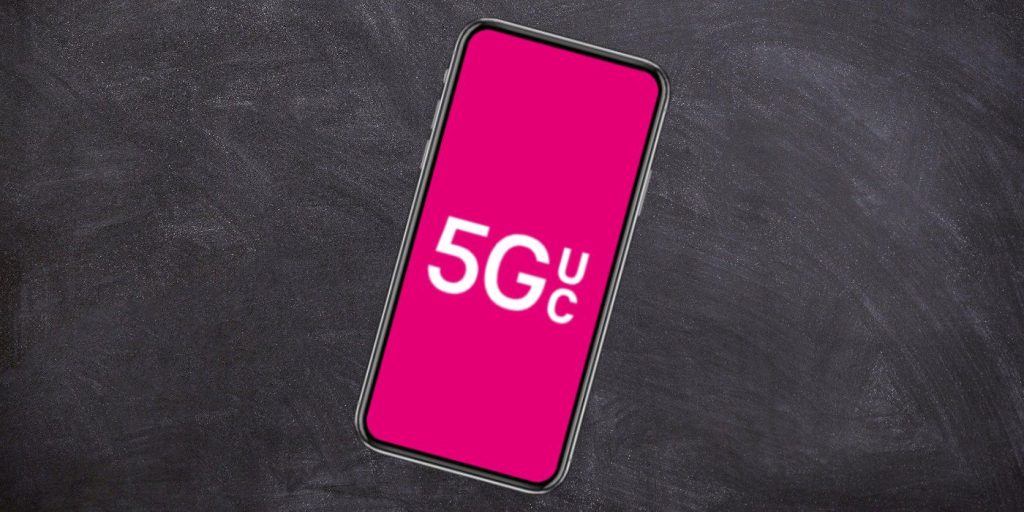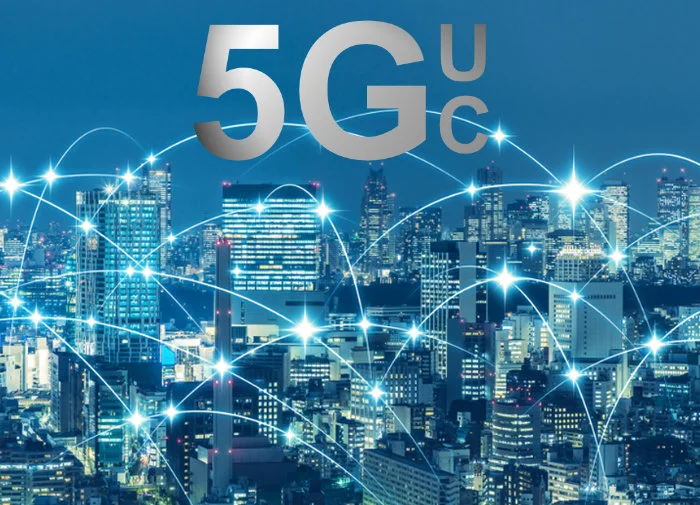If you glance at the right or left side of the screen on your phone, you might see some new icons appearing in the region where your signal strength is visible. Instead of LTE the letters could be 5G or some other unidentified alphabets.
To quote a well-known Jerry Seinfeld bit, what’s the significance of all the changes in cell signal signals? How will it impact the speed of your phone? What is the 5G and 5G UW and 5G UW?
What is 5G?
5G has been dominating the news media since it was widely used in the year 2019. 5G is reportedly “faster” and offers access to areas with low or no coverage.

However, 5G is the most recent model of mobile technology. There was previously 1G, 3G, 2G, and 4G. However, you may not have seen them mentioned as such. For a refresher:
- 1G is the very first data network in the 1980s, and it provided us with voice services analog.
- 2G was a technology from the 1990s that brought us digital voice service, also known as CDMA.
- 3G as of the beginning of 2000, brought us the development of mobile data.
- 4G (or LTE) was the most recent generation of technology prior to 5G. There are still a lot of phones that utilize it, and it encompasses all the features that we consider when we think of phones, i.e., “mobile broadband.”
5G OFFERS MORE OF EVERYTHING YOU NEED
5G was developed to provide higher speeds for data transmission as well as more reliable connections and a better experience. This isn’t just for mobile phones, but can be used with any device that supports it. That means that your PC and other devices are able to use 5G wireless technology as well.
5G can handle more data traffic than 4Gand is also more and can handle 100 times the number of user data requests with maximum efficiency.
MINIMAL LATENCY
5G claims that it has virtually no latency, which means it will feel very instant to use. It is true that the speed it is possible to download data or access the web page with 5G is dependent on more than just your data. The capabilities of your device, such as memory and the resources available are also important.
Future of 5G
What do we know about 5G? Innovative companies have made a variety of promises. Some of the most innovative initiatives include the creation of an “smart” transportation hub and the use of interconnected smart cars, or trains that communicate with 5G networks. In a smaller level, we can expect 5G being used to connect devices within the home.
Are there any negatives to 5G?
What are the disadvantages of 5G? 5G has its own limitations on technology as with all technologies. Concerns about 5G are mostly connected to the security aspect. Kaspersky states that the following risks can be experienced with any mass-scale 5G network.
1. MORE POINTS OF ENTRY FOR HACKERS
Data connection points that are more numerous mean more entry points for hackers. Decentralized security will require a rigorous surveillance to guard each data point and prevent threats from spreading across all of the network.
2. INCREASED PRESSURE ON MONITORING
The high volume of traffic from users can cause stress on security surveillance. While there are some benefits of having more people using the 5G network Each additional user can bring the risk. It’s difficult to limit the risk once you have a certain amount of people. Increased speed and volume means more sharing of data in the pipeline of digital data, which can pose the risk of a cyber-attack.
3. NO COMPREHENSIVE SECURITY STANDARDS
Since smart devices do not have an all-encompassing security standard they are susceptible to being hacked. Since anyone can build an internet-connected smart device they can create new vulnerabilities in the security system. When your headphones, speaker and fridge all connect to the internet these devices are vulnerable points.
Other concerns are the absence of encryption at certain locations in the network, and that 5G technology is so new that many people will not be aware of how to remain secure online. The massive education and implementation of the technology will be a problem.
Why 5G isn’t only “5G”
5G is the term used that covers the entirety of this brand new technology for data. It encompasses a range of bands and capabilities, the network carriers will also use different technologies within 5G. They’ve already begun to launch their networks using names that differentiate the services they provide.
What is 5G UW?
5G UW is Verizon’s variant of the high band “mmWave” (millimeter wave) and 5G mid-band. It is a shorthand in for Ultra Wideband and is sometimes called 5G UWB. If you’re on the network on an Verizon smartphone, you might be able to see UW on your phone screen. UW icon on the screen of your phone.
If you are using Verizon 5G Ultra Wideband it is possible that you won’t receive the same band every time. Its speeds can differ, but they’re still called “5G.” mmWave bands aren’t readily available in all places currently, so keep an eye out for improvements in this area.
5G NATIONWIDE VS 5G ULTRA WIDEBAND
Verizon employs the phrase “5G Nationwide” to refer to its low-band 5G network, which isn’t as fast as the high or mid-bands. If your phone does not display that UW logo, then you’re probably using this lower-tier network. It’s not significantly more efficient or superior to 4G LTE. In fact, it could represent the sole 5G that you can access on plans with lower prices. It’s why it’s vital to be aware of what you’re paying for in the event you decide to upgrade your phone to 5G.
What is 5G UC?
5G UC is the T-Mobile version of 5G. It also refers to as “Ultra Capacity.” It has high-band 5G and is based on mid-band spectrums that offer 2.5 GHz. You’ll notice the 5G UC icon on your smartphone if you’re within the area or one of these towers.

What happens if you get 5G but not the UC? It’s the slower low-band 5G network. T-Mobile refers to this as “Extended Range,” and it’s similar to 4G-LTE. It’s likely to become accessible in more places as T-Mobile expands its high-band service.
What’s the matter with 5G Plus?
AT&T’s 5G Plus service is displayed as the 5G+ icon that will let you know if you’re in high-band or mid-band area. It’s most commonly seen in public spaces and stadiums. gathering places where you can find 5G Plus being offered next time you go to an event, such as a concert or sporting event.
Outside of this area where you’re not, you’re more likely connect to the low-band network of 5G. In a similar vein If you see the 5G E icon on your smartphone, it’s connected to AT&T’s 5G Evolution network which has been a source of criticism in the past.
Which 5G type is the best?
The most reliable 5G is the one you have access to. High-band 5G is the most reliable and fastest however, it’s far from being fully developed, and a lot of 5G networks in most areas aren’t yet available. You can enjoy the speedy speeds on mid-band networks too.
In the majority of instances, you can look at the display of your phone to check whether you’re in middle or high, by tapping the icon. It’s not always clear which one you are in but you will be able to see it in the download speed.
5G specifications from carriers
Here is a list of 5G services offered by carriers for reference:
T-Mobile:
- 5G 5G (Ultra Capacity) (Ultra Capacity): High-band and Mid-band
- 5G Extended Range: Low-band
AT&T:
- 5G Plus: High-band and Mid-band
- 5G Evolution: Low-band
Verizon:
- 5G UW (Ultra Wideband): Mid-band and high-band
- 5G Nationwide: Low-band
The definitions will be changed, especially as more people use 5G networks, and as the capabilities increase. Every provider works with smaller companies, like pay-as-you go plans that allow them to sell their capacity on the network.

The customers from Mint Mobile, TracFone, or Republic Wireless, for example might not be aware that these companies resell 5G space to the larger players. A quick glance at the screen of your phone will tell whether you’re connected to the high and mid bands, or. it’s low band.
Conclusion
5G is going to be here for a while and it’s creating quite a buzz. For the majority of users, 5G will provide a stronger network, with faster speed and less latency, which will keep mobile users from experiencing insane levels of discontent.
Rural areas and other areas still away from having faster 5G bands, the majority will be able to enjoy 4G speeds. A phone that is compatible with 5G will allow you to enjoy faster speeds while traveling and is a plus. This also means that you don’t need to upgrade your phone when the network improves.
If you reside and work in a location that only has low-band 5G and it is expensive in order to get it, then it might be a good idea to delay the change. If your experience with wireless is adequate, then upgrading to a new device only to upgrade could not be the right choice to save money.
